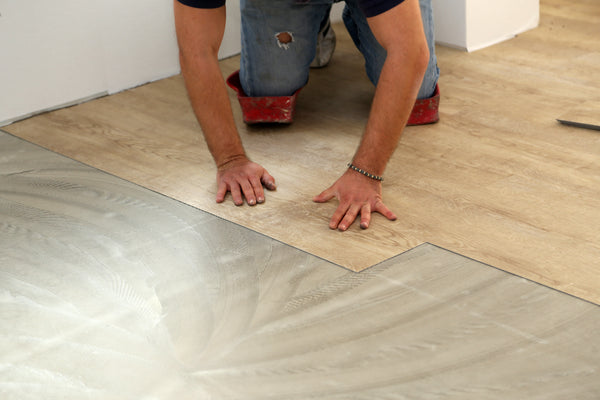If the surface you re laying on is level and smooth a well cushioned vinyl floor should be fine on its own.
Do you need underlay for vinyl flooring on floorboards.
It is also possible to use self adhesive vinyl tile underlay which is excellent for.
If you ve chosen luxury vinyl plank flooring as a replacement for your current flooring you ve made a very smart choice.
Draw a simple diagram of the rooms that you wish to fit vinyl in these drawings don t need to be perfect but the measurements need to be accurate.
Installing new flooring is a costly enterprise so you want to get it right the first time around.
Most lvt underlay is a high density 1mm 1 5mm thick foam with a moisture barrier.
Actually you may not even need underlayment depending on the product and where you plan to install it.
Ensure you add an extra 50 100mm to each edge.
Vinyl flooring by its very design is very stable.
Most vinyl flooring or luxury vinyl tiles do not require underlay.
Most lvp flooring is water resistant some types are even waterproof and it s also very durable able to resist dents dings scratches and stains.
It is important to only use an lvt underlay.
Other types of flooring underlay can often not provide the correct support for the click joints of a luxury vinyl tile.
The design of vinyl flooring prevents the need for an underlay.
For square or rectangular rooms simply multiply the width by the height.
Higher end wpc and spc vinyl floors may come with an attached underlayment.
Wpc and spc vinyl are more dimensionally stable and usually come in a thickness of over 4mm.
This baselayer makes the vinyl flooring incredibly durable and comfortable to walk on.
For example a room that is 5m x 2m will need 10m 2 of vinyl.
Most of today s luxury vinyl tiles are fully waterproof which means you won t have to put a damp screen to prevent moisture as a part of the underlay.
For click lock wpc and spc vinyl flooring you can install it with a vinyl flooring underlayment or directly on top of the subfloor.
Our luxury vinyl click flooring is laid using the same as technique as laminate options in that it s loose laid creating a floating floor.
The only time a vinyl floor may need underlay is when the surface beneath is uneven or has issues with damp.
As a result vinyl floors do not wobble or buckle under your feet.
Most vinyl floors don t need an underlay.
If you ve chosen to go the vinyl path you re probably wondering about the best underlayment for vinyl plank flooring.
Vinyl floors are designed with a base layer making the addition of underlay pointless.








